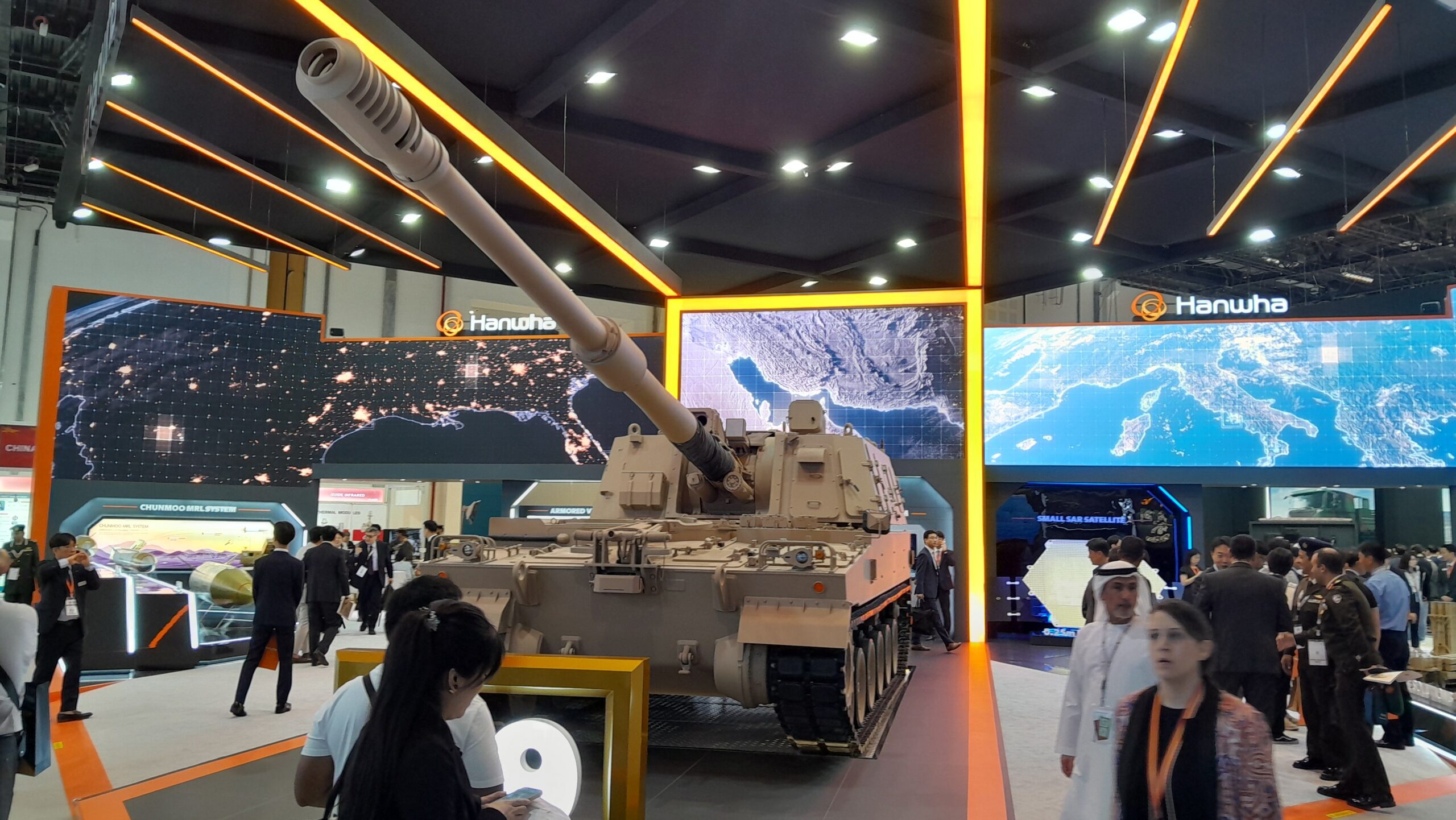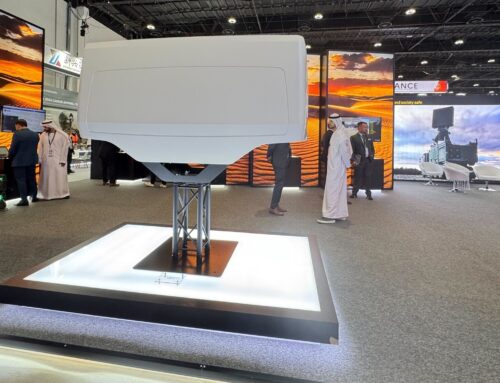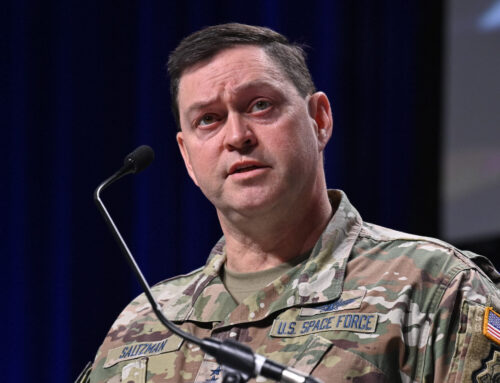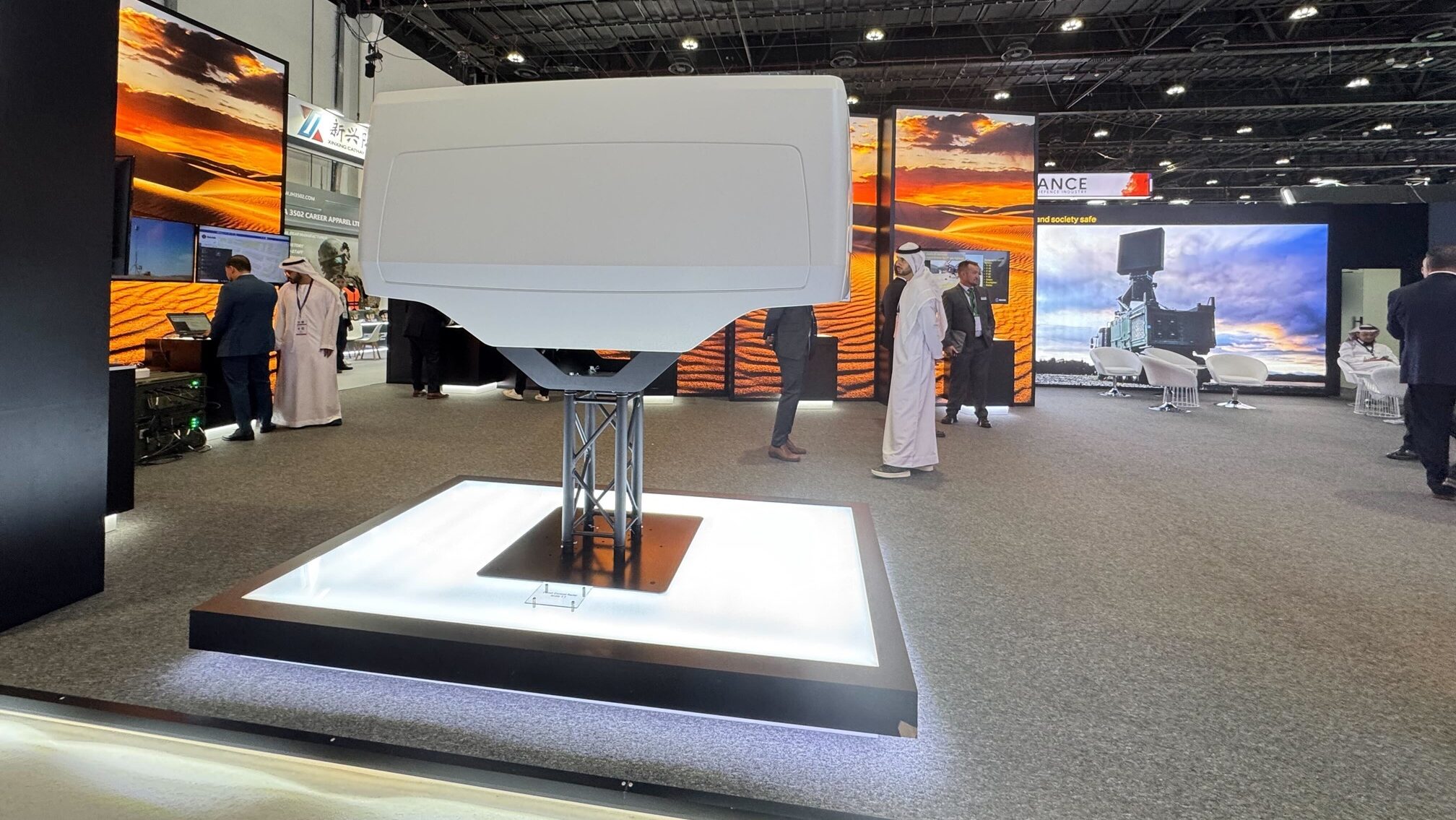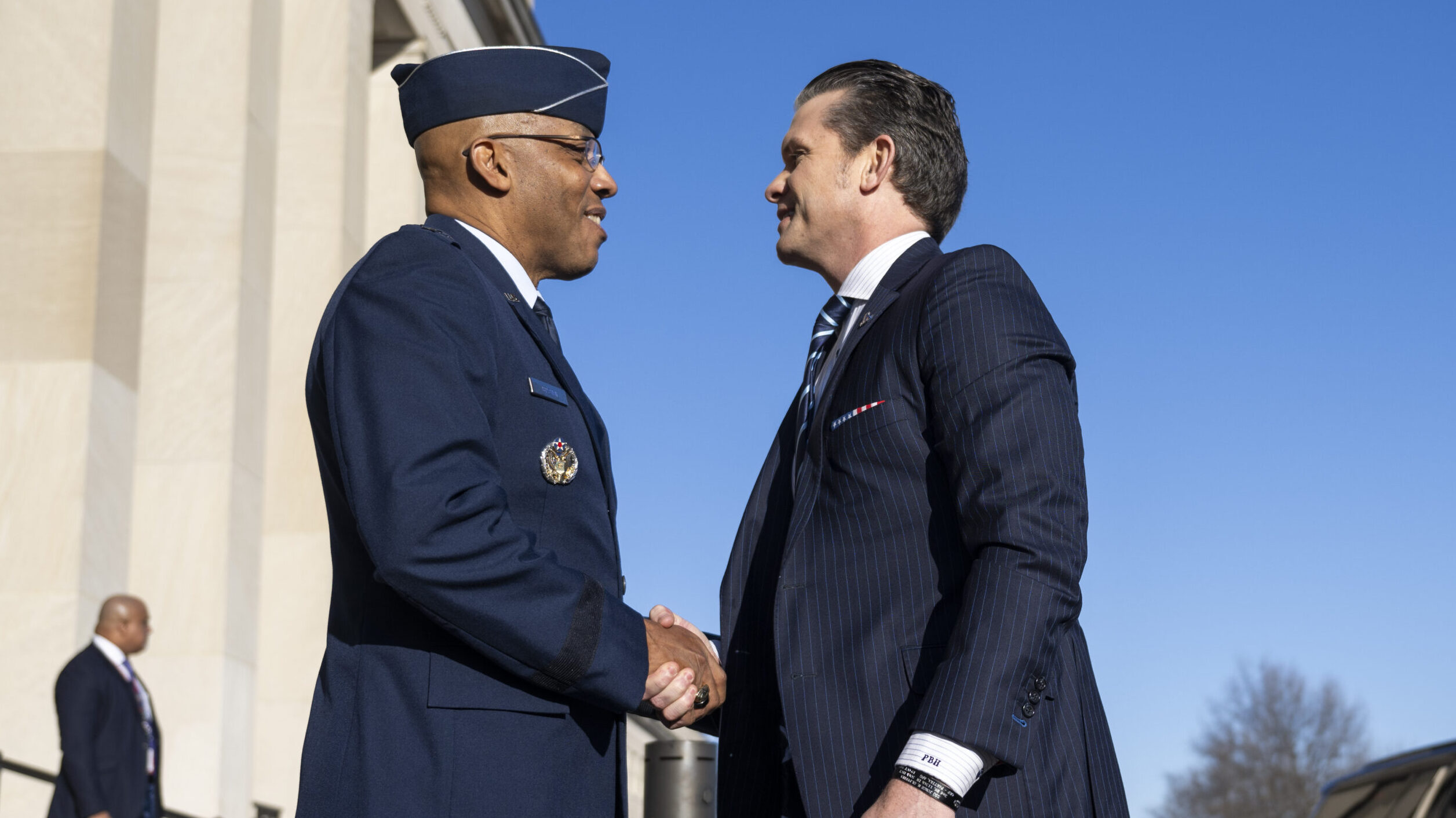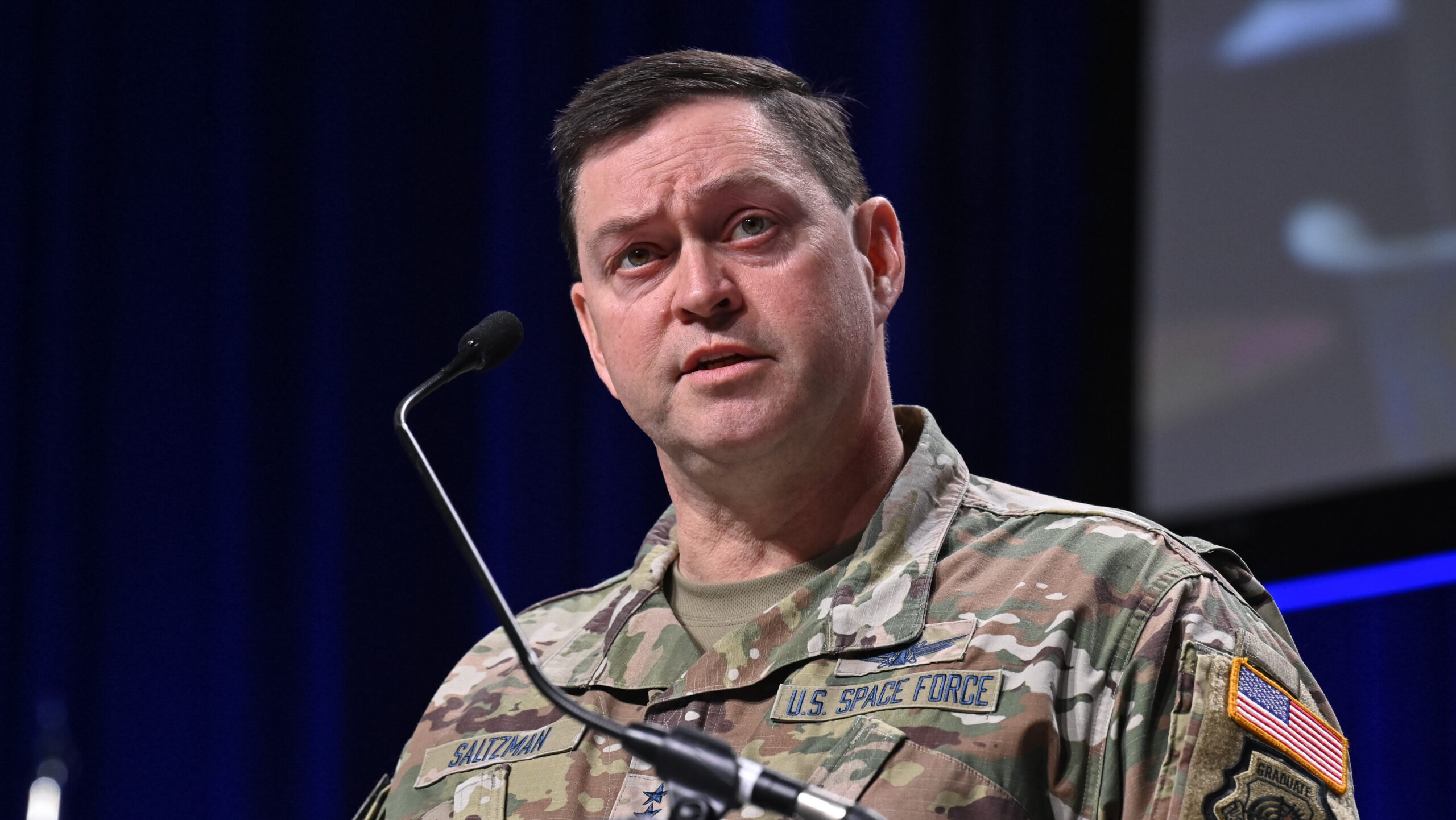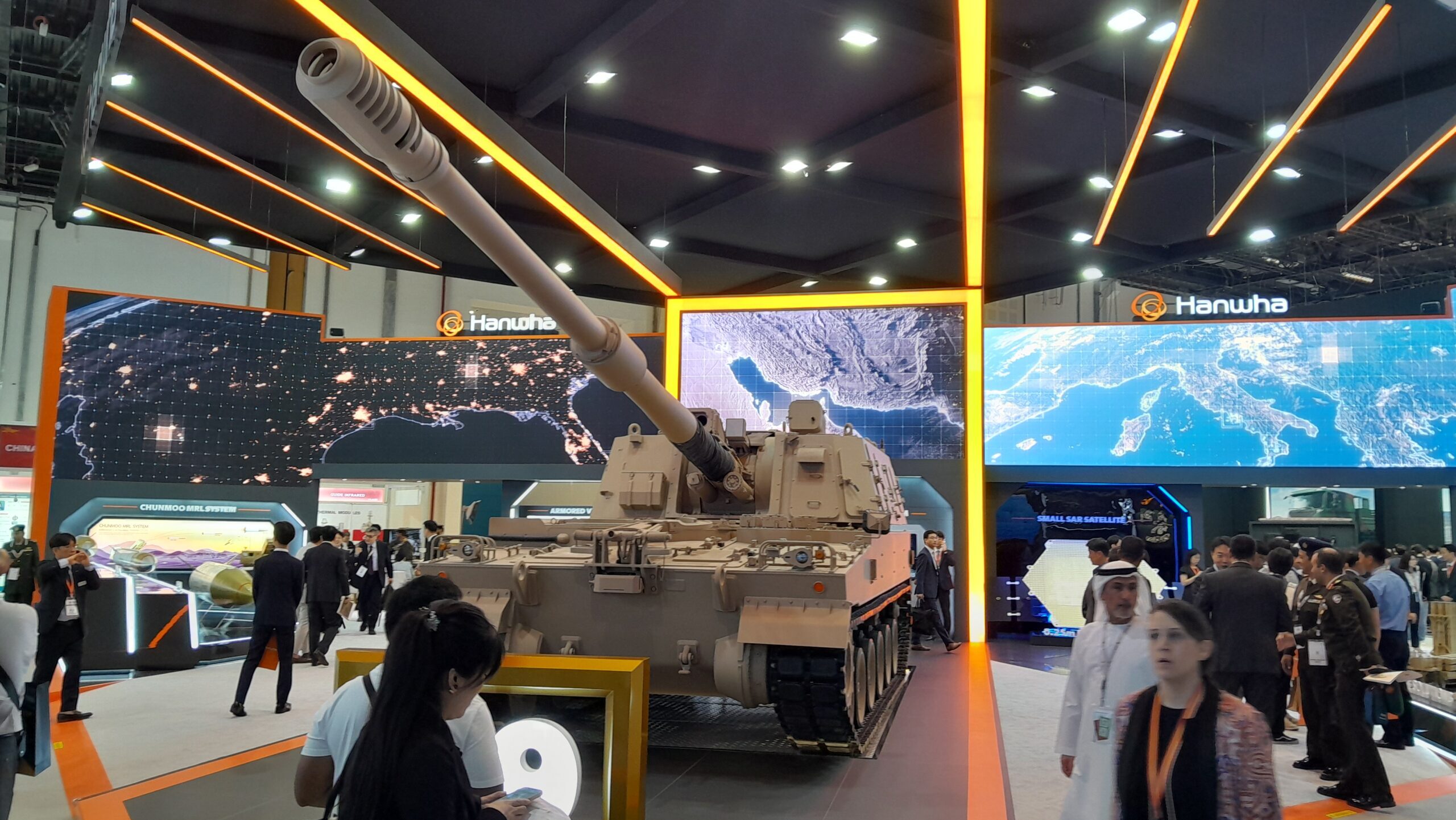
A Hanwha K9 howitzer on display at IDEX 2025. (Breaking Defense)
IDEX 2025 — On the job for less than two months, the new head of global defense business for Hanwha Aerospace has his sights set on helping to make the South Korean defense firm a major industrial player worldwide.
Just don’t ask him to prioritize one market over another.
“So to be a global leader we need position in the largest defense markets in the world … [the] United States, Europe, Middle East, Asia. So I would say you have to be focused on all of them,” Michael Coulter, who was appointed to the role in December, told Breaking Defense in an interview from Hanwha’s expansive floor space at IDEX 2025 here in Abu Dhabi.
Encouraged in recent years by a more defense export-friendly government in Seoul, Coulter said Hanwha made significant strides before his tenure to go global, including major contract wins in Australia, Poland, Romania and Egypt. But he said the company now aims to use each as a springboard to more business in each region.
“We’ve been doing export for 15, 20 years, but it’s just been in recent years that we’ve really been reaching out to create [a] global defense industrial base, creating global partnerships, partnerships in local countries,” he said.
Coulter, who was at Leonardo DRS before joining Hanwha, described the US as a key market, but acknowledged the firm has a “modest” presence there so far. A 2023 rejection for the Optionally Manned Fighting Vehicle, he said, has not stopped the company’s “commitment” to the American military market, and there are discussions with the US Army about “various capabilities.” (Coulter did not identify any specifically, but Breaking Defense has reported that Hanwha’s howitzer was among those recently observed when Army officials went on a global evaluation tour.)
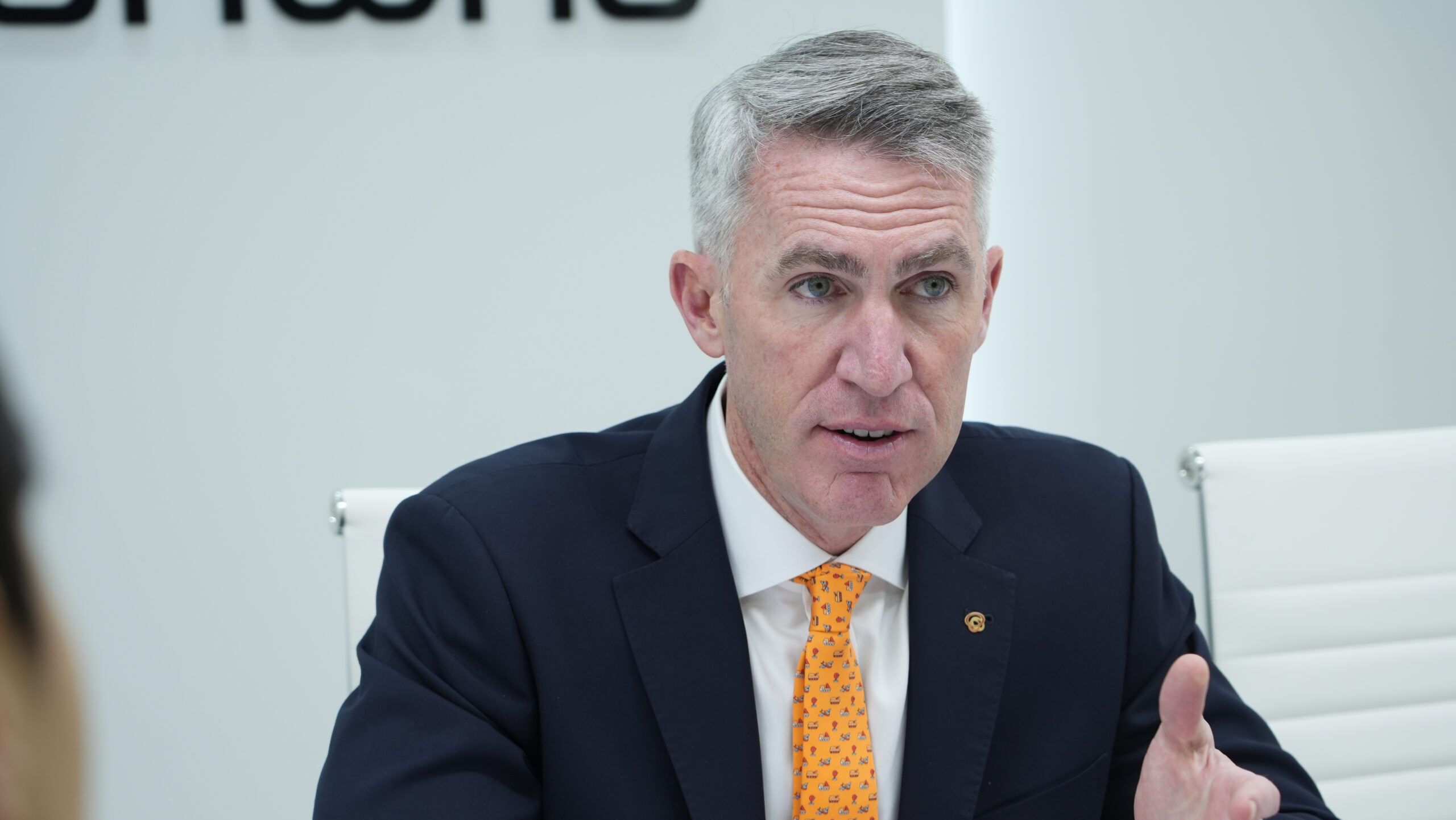
Michael Coulter, head of global defense at Hanwha Aerospace, speaks to Breaking Defense at IDEX 2025. (Courtesy Hanwha)
Naval systems could also be a significant opportunity for Hanwha in the US, as Coulter said there have been discussions with the Navy about leveraging Hanwha’s recent takeover of Philly Shipyard to eventually bolster the service’s fleet.
Coulter said Hanwha is keeping an especially close eye on Europe, where Russia’s 2022 invasion of Ukraine and the expected shift of US military support away from the continent under the Trump administration have spurred European nations to race to shore up their own capabilities.
“As European defense budgets increase, its important for us bring the strength of Korea but also to be European,” Coulter said. “So we are investing in partnerships and facilities and workforce in Europe.”
The deal with Romania in which Hanwha will build a facility to be a “production house for land force capability” is also meant to give the firm “really a domestic industrial base in Europe,” Coulter said. “We’re having similar conversations in Poland and in other countries in Europe as well.”
As for the Middle East, Hanwha took the opportunity at IDEX to bring in a full-sized K9 howitzer, showing publicly for the first time a version of the platform that used a Korean-built engine. The first Korean-made K9s are expected to go operational with the Egyptian military later this year, a Hanwha spokesperson told Breaking Defense, with locally produced versions expected in 2026.
Beyond Egypt, Coulter said there are “very active” conversations in the Gulf with Saudi Arabia and the United Arab Emirates. Regionally, he said, there’s “sincere” concern about the threat of ballistic missiles and therefore there’s an appetite for defenses against them — another investment area for Hanwha.
Finally in the Indo-Pacific region, Coulter highlighted Hanwha’s expected outsized presence in South Korea, but also its victories in Australia in competitive infantry fighting vehicle and howitzer programs. The Lucky Country could be, Coulter said, another springboard to larger markets.
“We’re producing those in Australia for use by the Australian military, but with an eye to being a global supplier out of a domestic presence in Australia,” he said. “So, very strong support from the Commonwealth for not just further capabilities in Australia, but then to using that hub in Australia as a global supply chain platform.”
But with all that said, Coulter said Hanwha is interested in expanding not just in a geographical sense, but a “functional” one too.
“And that means building up partnerships around the world, be those partnerships with militaries and governments, to partnerships with technology companies, to partnerships with industrial partners to grow capacity around the world,” he said. That kind of “functional growth,” Hanwha is “very focused on.”


